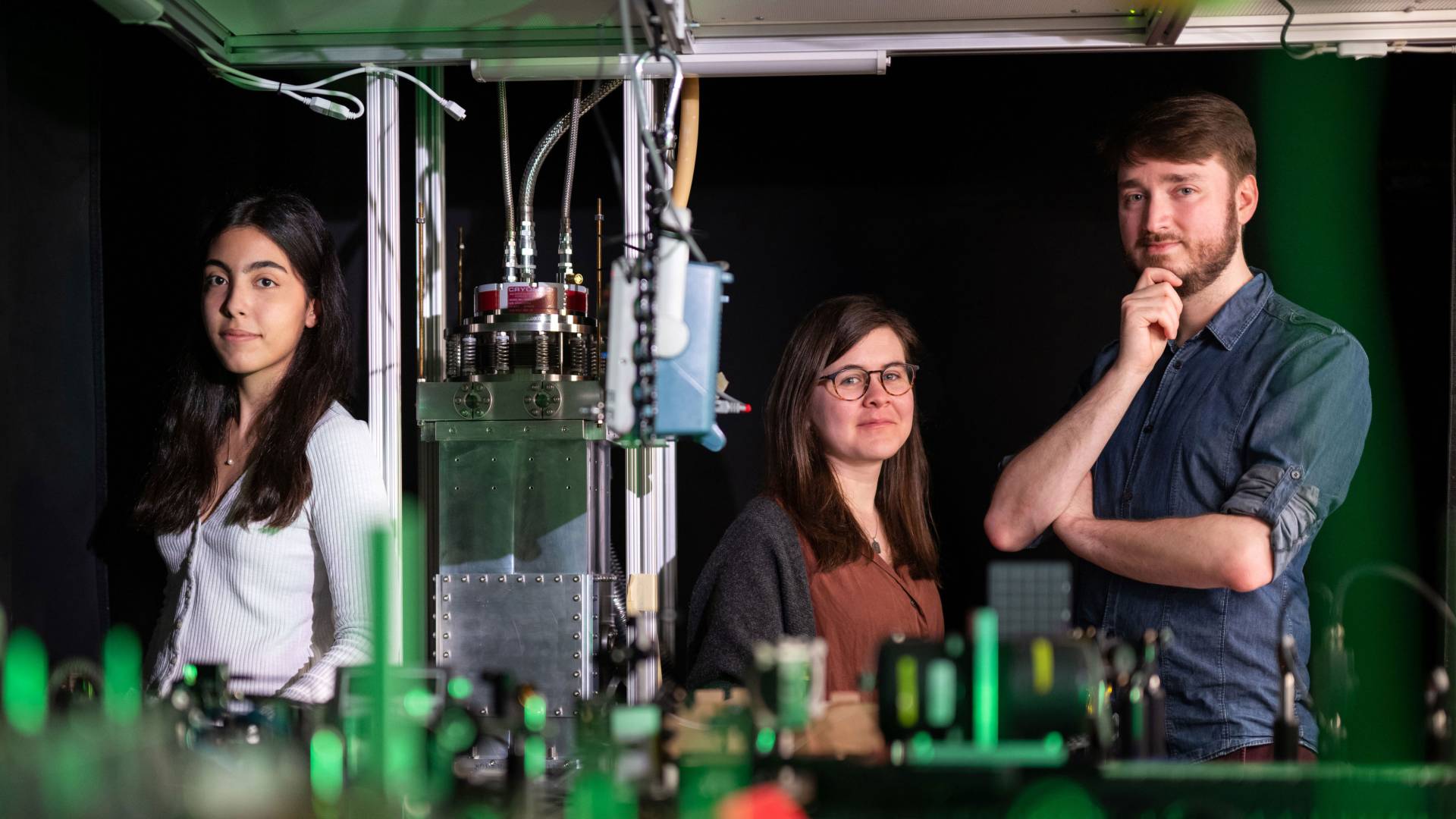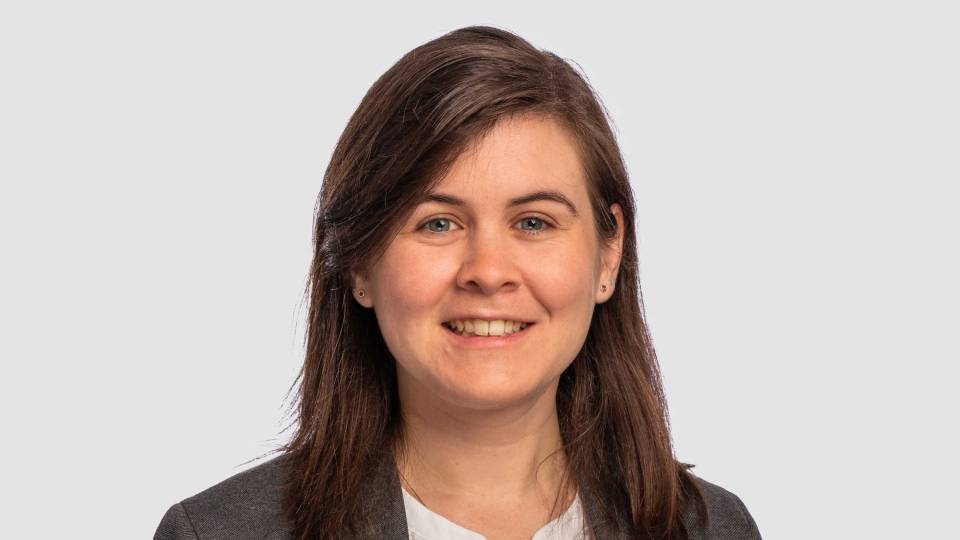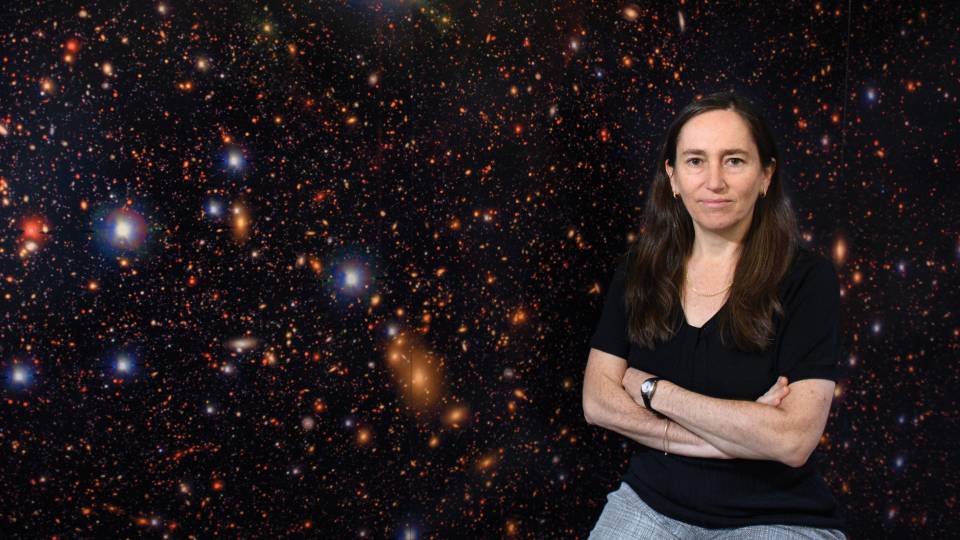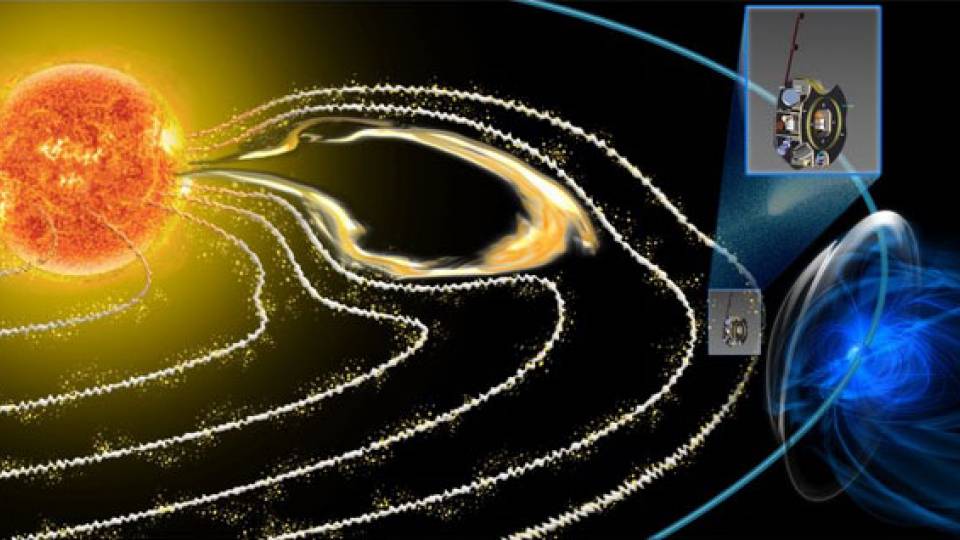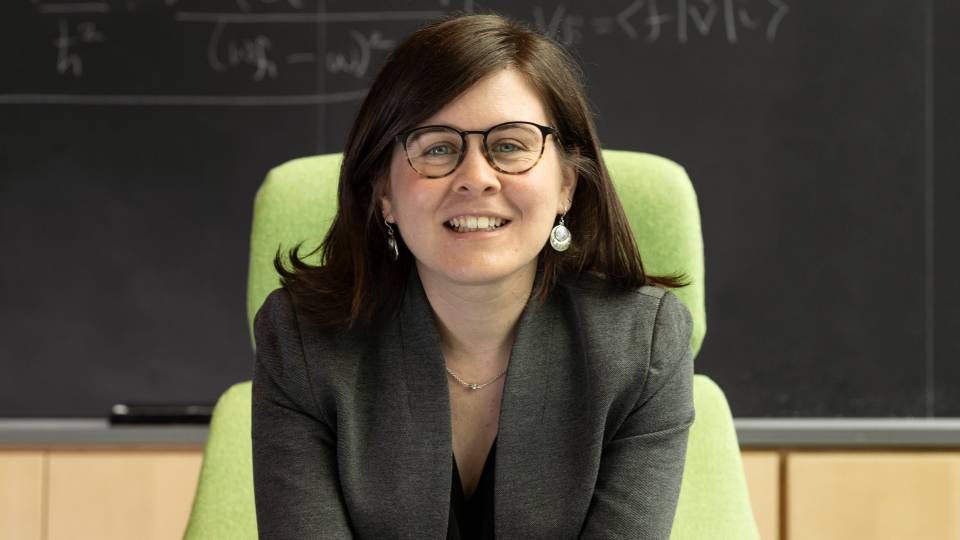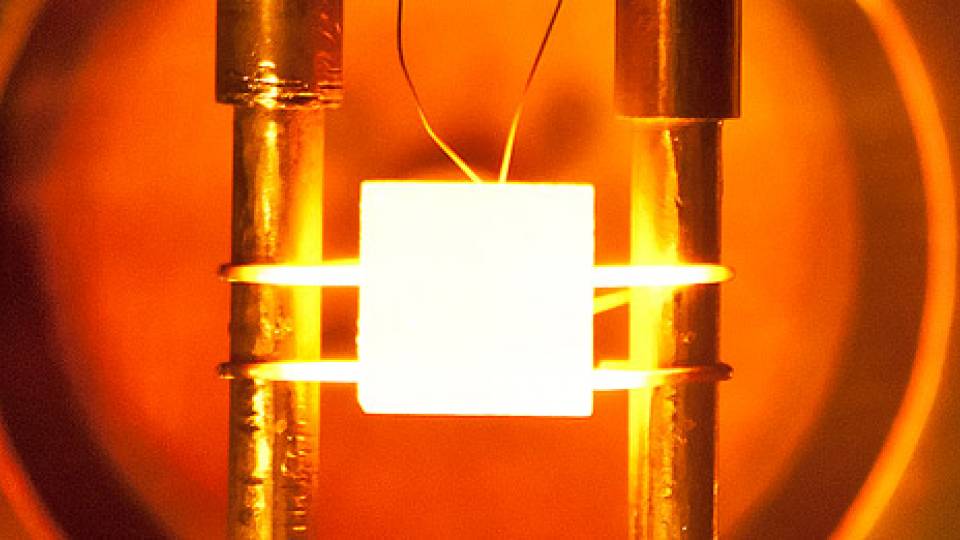Assistant Professor of Chemistry Marissa Weichman (center) with lab members Negar Baradaran (left) and Dominik Charczun in their spectroscopy lab.
In research that has all the makings of a blockbuster movie — with interstellar chemistry, million-year timescales, and high-powered lasers — Princeton chemists are expanding our understanding of the composition of the universe.
Backed by a three-year grant from the National Science Foundation, researchers led by Princeton’s Marissa Weichman will help identify new buckyball-like molecules, formed in space, which “drive the chemistry of planets and stars and galaxy formation,” said Weichman, an assistant professor of chemistry.
“These are big, fundamental questions about where we come from and what kind of universe we live in,” she said. These molecules are “the prebiotic origins of life, the seeds of molecules that start life. That’s why we’re looking at them.”
Her lab has designed a device that measures the light absorption of particular kinds of molecules called fullerenes. These geodesic hollow “carbon cages” are the largest group of molecules identified in space so far, and they have already redefined our assumptions about molecular complexity in interstellar environments.
Weichman wants to take those assumptions to the next level.
As a postdoc five years ago, Weichman published a paper in Science on the simplest C60 fullerenes, colloquially called buckyballs. Now, using the signature spectrum of the buckyball as a benchmark, Weichman will target three similar molecules: bigger fullerenes; heterofullerenes, in which carbon atoms have been swapped out for other elements; and endofullerenes, which feature smaller molecules trapped inside the cage.
“Interstellar space is a really strange environment,” Weichman said. “It’s cold. It’s really low-pressure. There are not many molecules in a given amount of space, and the molecules that do exist are constantly being irradiated by ultraviolet radiation and bombarded by cosmic particles. So, the chemistry that happens there is totally different from what happens on Earth.”
The constant radiation bombardment, from particles blown out by supernovas across the galaxy, creates a hostile environment for molecules, she explained. “Fullerenes happen to be exceptionally stable and robust against fragmentation,” she said. “They can last more or less forever in space. Understanding these species is really important for astrochemistry, and spectroscopy is how we detect that a specific given molecule is present.”
Next-generation device
The newly designed instrument will yield long-wave infrared absorption spectra of fullerenes. Once it’s up and running, researchers will compare their results with data from space-based infrared observatories — including the Spitzer Space Telescope and the James Webb Space Telescope — that NASA uses to peer at features that are invisible to optical telescopes. Along with locating known forms of fullerenes like C60 and C70, Weichman’s team will also try to clarify the identities of many spectral signatures that the space telescopes have observed.
“This is still a big research question in astrochemistry,” Weichman said. “There are all these absorption and emission lines that are completely unresolved. They’re not buckyballs, so what are they?”
Fullerenes, with their dozens of atoms, occupy a significant number of rotational and vibrational quantum states at room temperature. This leads to something called spectral congestion, which has hindered researchers’ ability to completely resolve the spectra of these molecules.
Graduate student Negar Baradaran has an answer to that. She designed and assembled the lab’s cryochamber, which cools each sample down to only a few degrees above absolute zero, similar to the temperatures of outer space. At those temperatures, the atomic vibration becomes sluggish, allowing their team tp get better resolution and more clearly discern the quantum states of the fullerenes, Baradaran explained.
Groundwork funding for this research came from a 2022 grant from Princeton’s Dean for Research Innovation Fund, which includes support from the University endowment. Astrochemistry marks a new thrust for Weichman’s lab, but it dovetails nicely with her group’s existing expertise in developing new tools for spectroscopy that explore what molecules are doing quantum mechanically.
Today, their bespoke spectrometer is nearly ready to go. With the NSF funding, the researchers will soon begin screening for fullerenes.
“Making the measurements of C60 was hard,” said Weichman. “But there is going to be a lot of development just to move beyond C60.”
Charczun added, “Astronomers use those magnificent space telescopes to gather data, but often that data is pretty cryptic. These are not simple systems to study. That’s why it’s important to provide cutting-edge, high quality reference data. This is what we aim to do using the newest, best techniques available.”
This project, Precision Spectroscopy of Fullerenes: Towards Resolving Astrophysical Molecular Complexity, has been funded by the National Science Foundation, Division of Astronomical Sciences, with foundational funding from the Dean for Research Innovation Fund.
You can read a more detailed version of this story on the Department of Chemistry homepage.
